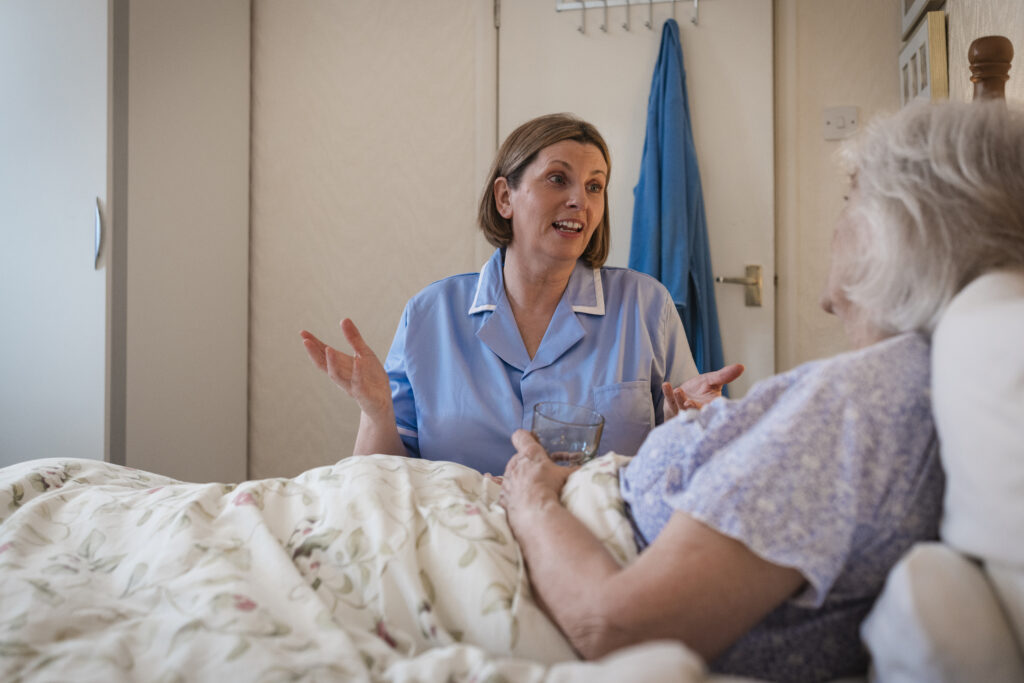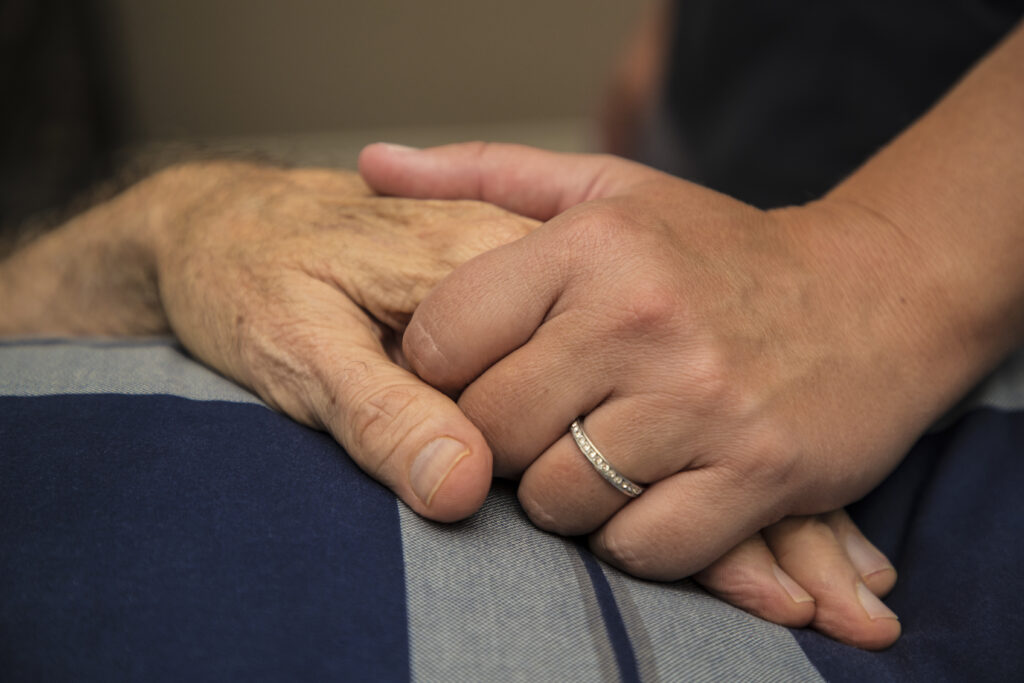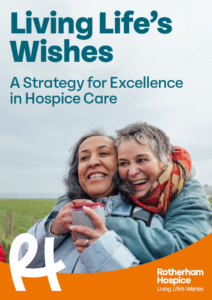Hospice CEO Assesses the New NHS Plan: Will It Deliver for End-of-Life Care in Rotherham?
- Posted on
- In News

As Chief Executive of Rotherham Hospice, I’ve reviewed the NHS’s Fit for the Future: 10-Year Health Plan for England with deep interest and a firm sense of responsibility, both to our patients and our wider community. This is my honest assessment of what the Plan means for the people of Rotherham, and for the future of end-of-life care across our town. I write not just on behalf of the Hospice, but on behalf of every family we support, every life we help ease, and every individual who deserves to die with dignity, comfort, and choice. This new Plan sets out transformative ambitions for the health service, but the question remains: does it deliver for the dying?
At Rotherham Hospice, our mission is clear. We want everyone in our community to easily and confidently access palliative and end-of-life care tailored to their individual needs and wishes, wherever and however they choose. Our strategy, Living Life’s Wishes, is a bold commitment to expanding services, offering support from the point of diagnosis, and ensuring that everyone, regardless of background, can die with dignity and on their own terms.
So, does the 10-Year NHS Plan align with this? And will it realistically lead to improvements for people in Rotherham nearing the end of life?
Let’s start with the numbers...
In Rotherham, over 50,000 people are aged 65 or older, making up nearly 20% of our total population, a figure that is expected to grow significantly in the coming decade. Nationally, the Office for National Statistics forecasts that by 2040, the annual number of deaths in England and Wales will increase by nearly 25%, driven by an ageing population and the growing prevalence of long-term conditions such as dementia, heart failure, and chronic respiratory disease.
Yet an estimated 118,000 people in England each year do not receive the palliative care they need. That’s 1 in 4 people dying without the right support, an appalling and unnecessary failure of the system.
And it’s not just a moral issue; it’s an economic one too. Research shows that hospices save the NHS around £1.4 billion a year by delivering more cost-effective, personalised care outside of hospital settings. This is particularly significant when you consider that the average cost of an inpatient hospital bed is over £400 per day, compared to less than half that in a hospice setting or through home-based care.

The Funding Disparity
Despite this vital role, palliative care services remain chronically underfunded.
At Rotherham Hospice, only 37% of our running costs are covered by the NHS. The rest must be raised through fundraising, retail income, donations, and legacies, despite our services being a statutory requirement under National Institute for Health and Care Excellence (NICE) guidance. This year, we are operating with a planned deficit of £1.1 million, simply to maintain the level of care our community needs.
Compare this with maternity care. Both maternity and palliative care are subject to NICE standards and expected to be universally accessible. But while the NHS fully funds maternity nurses, midwives, and delivery services, hospices are expected to fundraise for essential nurses who care for the dying.
We’re not suggesting maternity care is overfunded, far from it. But it is telling that we do not ask parents to hold raffles to fund their midwives, yet we rely on cake sales and charity runs to fund our end-of-life nurses. In a country where death is one of the only certainties, this mismatch is indefensible.

A Missed Opportunity?
The NHS Plan outlines a welcome move to neighbourhood-based health services: local, personalised, community-led care delivered through new neighbourhood health centres. This model strongly aligns with how many hospices, including ours, already operate: delivering care in people’s homes, supporting carers, coordinating multidisciplinary teams, and providing around-the-clock support through services like our Hospice at Home team.
Yet hospices are almost entirely absent from the NHS Plan’s vision of neighbourhood-based care. This omission risks overlooking some of the most experienced and effective providers of local care. Hospices don’t just talk about joined-up, place-based working; we’ve been doing it for decades. If the NHS is serious about shifting care into the community, as outlined explicitly in the Plan, it must bring hospices to the table as core partners, not peripheral players. The NHS Plan rightly identifies the need to support people with complex, chronic, and terminal conditions closer to home, and this is precisely the point at which hospices naturally align. We already have the infrastructure, workforce, and local knowledge to do that. What we don’t have is secure funding or inclusion in national commissioning frameworks.
So what does this mean for Rotherham?
At Rotherham Hospice, we’ve laid out a clear and locally grounded strategy:
- Expand our community services so more people can die at home if they wish.
- Start care from the point of diagnosis, not just in the final days or weeks.
- Deliver holistic support, emotional, physical, and spiritual, for both patients and families.
- Invest in inclusive, culturally sensitive care, reflecting our town’s rich diversity.
- Champion innovation, from digital health to personalised therapies.
These aims align strongly with the NHS Plan’s broader aspirations, such as personalised care plans, community integration, and better management of chronic and complex conditions. But alignment on paper is meaningless without action on funding, policy, and partnership.
So, Will the Plan Deliver?
Based on what has been communicated so far, frankly, we cannot see how it will. Without explicit recognition of hospices as critical partners, clear funding pledges, or a strategy to address existing inequities, the reality is that this ambitious Plan risks overlooking those nearing the end of life entirely.
Hospices have once again been sidelined, despite providing precisely the type of integrated, personalised community care that the NHS says it wants to deliver. Right now, there are no national targets for palliative care, no guarantees of equity, and no central strategy outlining how hospices will be integrated into this future community model. The Plan is bold in ambition, yet sadly silent on the needs of the dying.
However, it is not too late. If the government and NHS urgently rethink their approach, providing secure funding, clear policy direction, and genuine partnership, this Plan could still deliver the compassionate, community-based end-of-life care that everyone deserves.
If we are truly building a health system “fit for the future”, we must remember that a compassionate society is judged not just by how it treats the living, but by how it cares for the dying.
Hospices like Rotherham are ready to be part of the solution. But the NHS, and government, must act now to provide the investment and inclusion needed to make that possible. We need a future where end-of-life care is not optional or charitable but guaranteed.
Dying well should never depend on a donation bucket.





